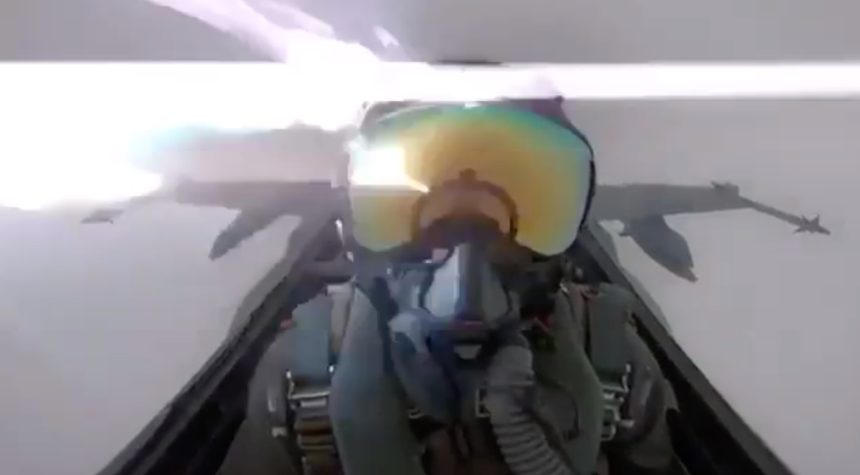A Kuwaiti Air Force F/A-18 Hornet is hit by a lightning strike while flying through the clouds.
The following video is pretty impressive. It shows an F/A-18C being hit by a lightning bolt. Along with the flash of light, you can clearly hear a loud bang inside the cockpit, taking the pilot by surprise. Shock aside, the aircraft was probably not really damaged by the bolt.
VIDEO: Lightning bolt strikes a #Kuwaiti Air Force F/A-18 Hornet! pic.twitter.com/oBldSa1Tcf
— محمد بن خالد (@MbKS15) December 28, 2018
We have published several articles explaining that close encounters between jets and lightning occur every now and then around the globe, usually causing little to no damage at all to the planes. Usually. Because sometimes, lightning strikes cause significant damage. As happened on Dec. 19, 2017, when B-52 Stratorfortress (60-0051), with the 93rd Bomb Squadron/307th BW AFRC. The heavy bomber was about to land at Barksdale AFB, Louisiana, when the crew heard something that sounded like a thud coming from the outside of the aircraft. The B-52 landed safely, but once on the ground the crew discovered that the sound they heard was actually a lightning strike that tore a person-sized gash completely through the tail of the aircraft!
Here’s what this Author wrote in one of those stories:
In the 1980s, some F-16 Fighting Falcon jets were lost after being hit by a lightining strike. In one case, the lightning ignited the vapors in the empty centerline tank, which exploded causing extended damage to the aircraft’s hydraulic system.
Since lightning strikes are quite rare (1 event each year on average) these are seldom a real risk to military or civil aviation.
Furthermore, planes are shielded by a so-called Faraday Cage externally made by a conducting material, that blocks out external static electrical fields: charges redistribute on the conduting material and don’t affect the cage’s interior.
Wide bodies are huge flying Faraday Cages: if hit by a lightning they let the current pass through the fuselage until ground, preserving the systems’ integrity.
All commercial and mil planes have to meet several safety lightining-related requirements to get the airwothiness certifications required in the U.S. or Europe.
For instance, they must be able to withstand a lightning strike without suffering significant airframe damage, without any possibility of accidental fuel ignition in the tanks and preserving the avionics and systems failures induced by the electromagnetic field created by the electrical charges of the lightning.
On the Internet, you can find some videos showing civilian planes hit by lightning strikes and continue flying as nothing has happened.









